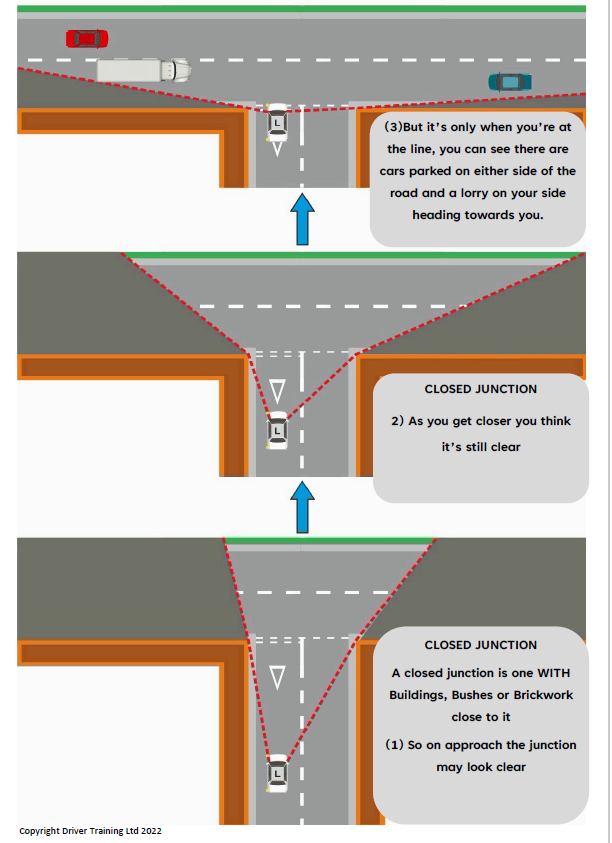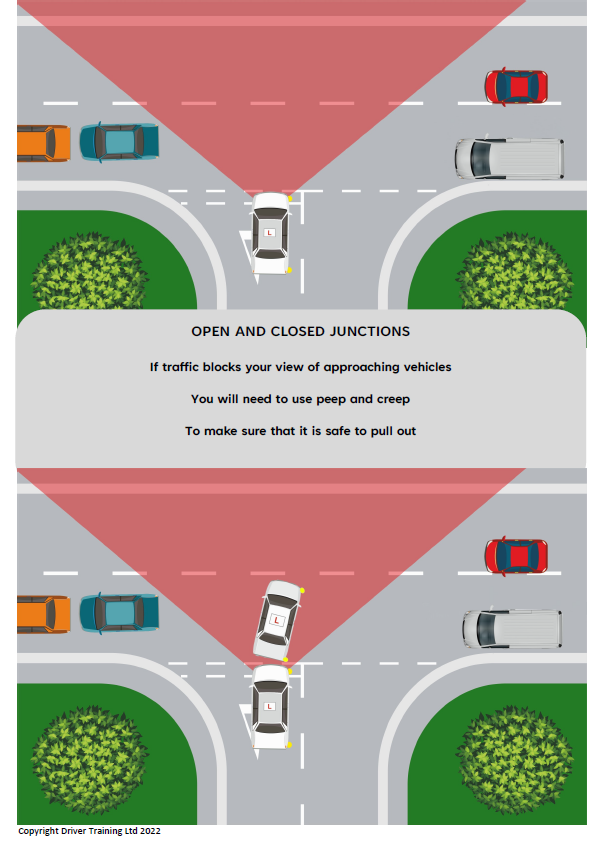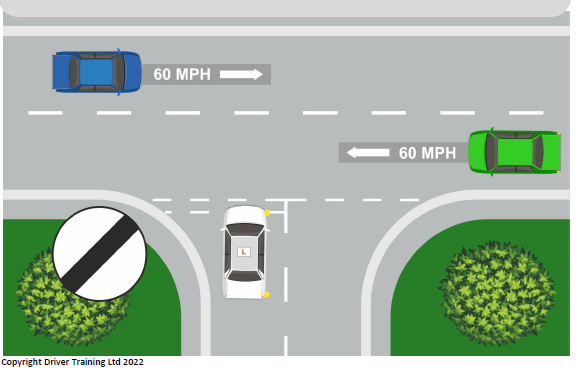Open and Closed Junctions
Open or Closed Junction?
Open and closed junctions - At and around junctions, statistics show that these particular road systems represent the most hazardous areas and it’s at junctions where the most accidents take place. Junctions pose a particular hazard to cyclists and motorcyclists.
With so many junctions varying drastically in terms of size, complexity, layout and with what the driver can see ‘visibility’, junctions are particularly challenging for novice drivers.
In fact year on year, the number one reason for driving test failures if a lack of proper observation at junctions
Most junctions aren’t particularly dangerous. Danger usually arises due to drivers not taking enough time to correctly assess the situation before emerging. This begins with the approach to the junction. Approach a junction using the MSPSL routine and approach slow enough to be able to assess if the junction is open or closed. This will allow you enough time to stop safely if you need to, or proceed without the need to stop at all.
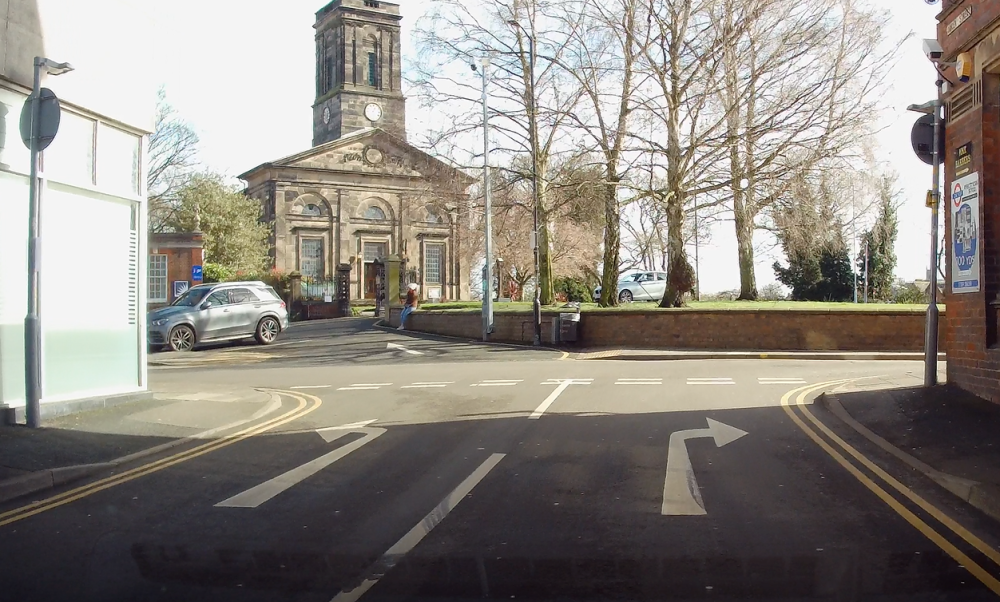
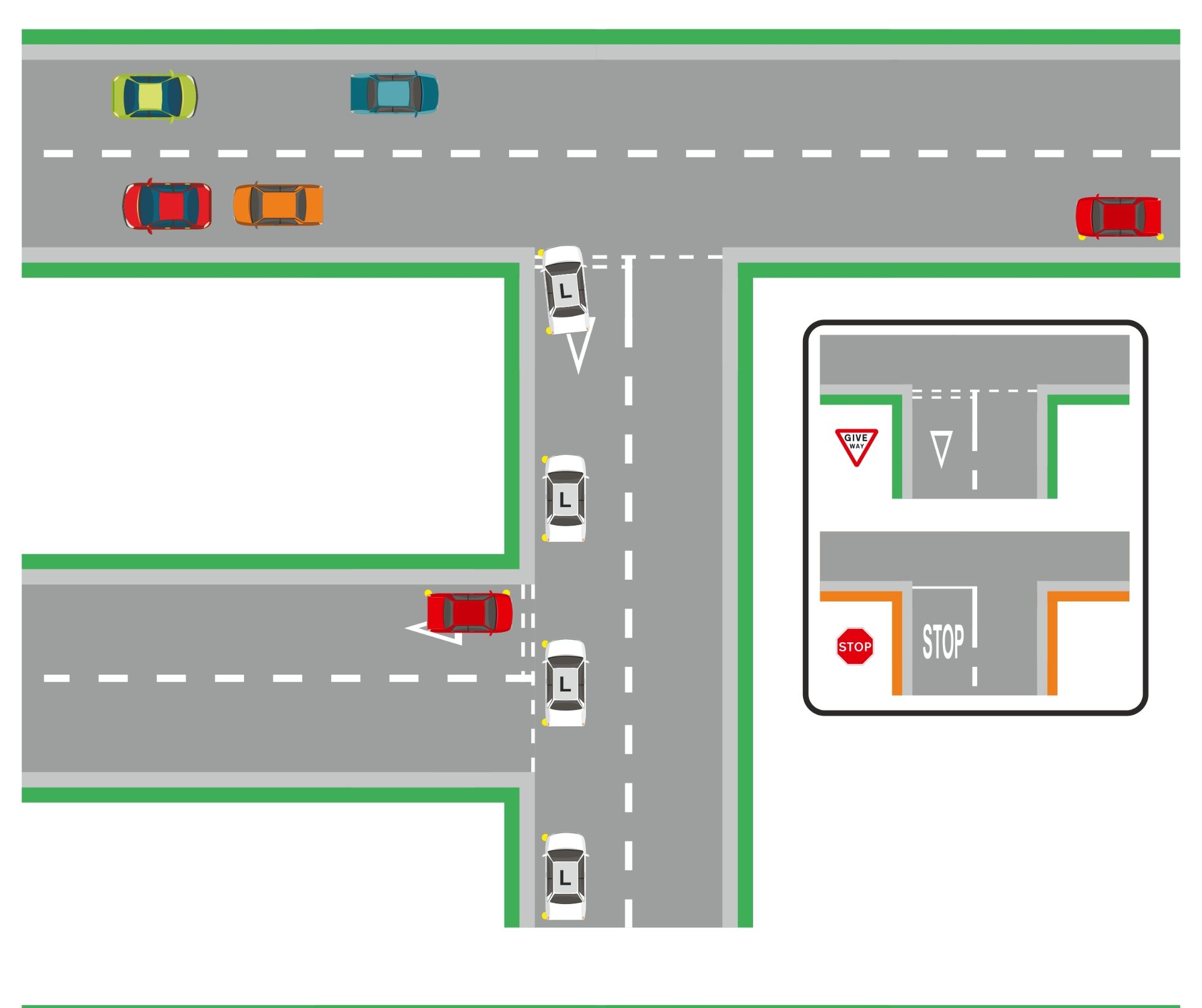
Open Junction
An open junction is one with no buildings, bushes or brickwork on approach.
This allows you from a good distance from it to see if there are any vehicles coming towards you from either direction.
The further ahead that you look to see if the junction is open or not, the easier it will become to deal with it
Its just worth noting, that if there are any parked vehicles, then they will provide blindspots that could hide cyclists or motorbikes
Closed Junctions
Closed junctions are ones with buildings, bushes or brickwork
On approach it means that you cannot see what is coming towards the junction.
Bottom Picture - Junction seems empty and clear to go
Midddle Picture - As you get closer it seems to be one parked car
Top Picture - Its only at the line that you realise that its 2 parked cars and a van on the wrong side of the road.
So at a closed junction it is really important that you come to the line and look the minimum observation of Right-Left-Right then decide whether to go or not.
Closed Junctions Peep and Creep
If the junction is not only a closed one, but there also obstruction such as trees, hedges, brickwork, then you need to do a routine that is known as peep and creep.
Where at a very slow walking pace, you move slightly forward whilst looking both ways
This way if anything is coming towards you, for you to be simply edging out, gives them time to decide whether to slow down, go around you or let you out.
Its when a car pulls out quickly, that it causes a problem, because in that split second, both drivers decide to head the same way and of course thats when accidents happen
Closed Junctions on Bends
Probably the hardest junction to deal with are those that are on bends in the road.
With these junctions even using peep and creep doesn't help a great deal, just because of not being able to see around the bend.
These are sometimes designated as STOP junctions rather than just Give Way
Sometimes opposite there may be a form of mirror to help you see more around the corner.
If not try lowering your door window so you can hopefully at least hear any oncoming vehicle.
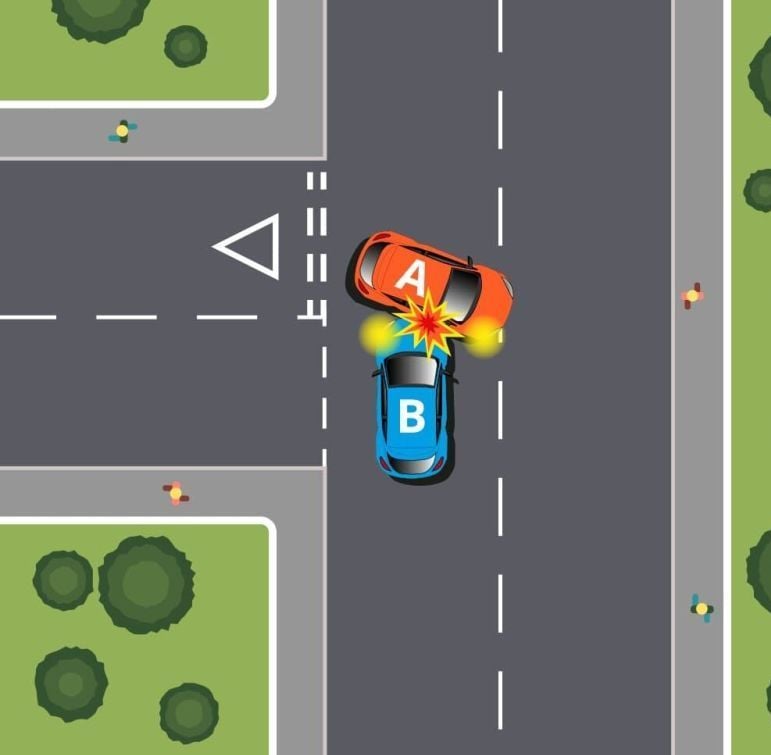
Misleading Signal
Junctions that are close to roundabouts or other junctions need extra observations
Due to the fact that sometimes cars coming off the roundabout or junction may have forgotten to turn their indicator off or it may not have had time to cancel itself.
If its a fairly straight road and you see a signal come on and the car begin to slow down, it should be safe to go.
If however the signal has been on from the moment you could see the vehicle, it is better to sit and wait to make sure where the car may be going
Open and Closed Junctions on Driving Test
Junctions in your driving test
Improper observation is one of the most common reasons to fail a driving test and nothing highlights the flaws in your observational skills like approaching a junction. Be extra-careful to use your MSPSL routine and make sure that you’re looking carefully for cyclists and other road users. Here are a few tips to help you out:
Check your mirrors and start signalling good and early.
Always give way to pedestrians crossing the road.
At junctions look for any second or third vehicle before emerging as there may be someting overtaking them
Maintain a slow and steady speed.
Stop just before the white line (if present). Don’t stop too early and don’t go over the line before you’re ready.
Don’t pull out in front of another vehicle, forcing it to slow down sharply.

Contact Us
Hours
Monday - Friday:
09:00 am - 6:00 pm
Saturday - Sunday:
10:00 am - 3:00 pm
